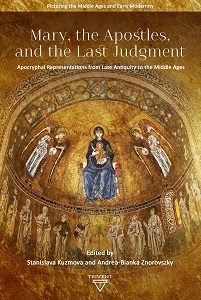Apocryphal Iconography in the Byzantine Churches of Cappadocia
Apocryphal Iconography in the Byzantine Churches of Cappadocia
Meaning and Visibility in Scenes of the Story of Mary and the Infancy of Christ
Author(s): Manuela Studer-Karlen
Subject(s): Christian Theology and Religion, History, Middle Ages, Theology and Religion, History of Religion
Published by: Trivent Publishing
Keywords: Cappadocia; Byzantine programs; liturgy; apocryphal iconography; Protevangelium of James; story of Mary; Infancy of Christ
Summary/Abstract: By the early eighth century, the Protevangelium of James had achieved full acceptance in the Byzantine liturgical and theological traditions because it was used as an inspiration for liturgical hymns and sermons. The liturgical use of the Protevangelium correlates with the growing interest in the cult of Mary. In Cappadocia, from the ninth to the eleventh centuries, the permanent use of apocryphal sources can be observed, notably for the scenes of the Infancy of Christ as well as episodes featuring the Virgin. This phenomenon is unique to Cappadocia. Taking into account that Cappadocia is unparalleled in the Byzantine world for its wealth of surviving monuments with paintings that survive to this period, this region offers a great local case study for evidence of apocryphal source material.
- Page Range: 83-115
- Page Count: 33
- Publication Year: 2020
- Language: English
- Content File-PDF

